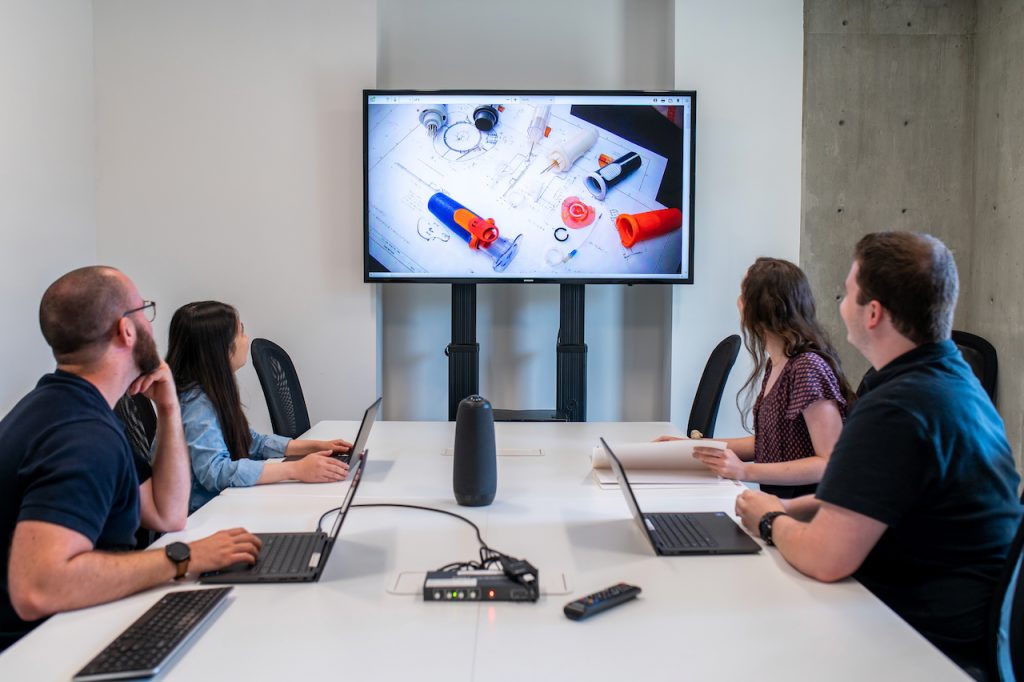 So, you have toiled through the design process and successfully launched a product to manufacturing and are looking to add value to your existing design. Where should you focus your budget?
So, you have toiled through the design process and successfully launched a product to manufacturing and are looking to add value to your existing design. Where should you focus your budget?
This blog outlines questions you can ask yourself to evaluate your device capability and reinvest in your product to add value.
1) Scalability
Scalability is the ability to ramp a product up into higher volumes. Does your design require complex manual processes to be assembled? Is the manufacturing process mature and well defined?
These are the kind of questions you should be asking to determine if your product is scalable. The end goal for high volume manufacturing is to automate as much of the process as possible.
Making design changes that enable easier assembly and developing processes beyond the initial alpha/beta prototype builds can enable higher output. The improved production potential can be confirmed by running batches instead of continuous production. This will show that a larger volume can be built in a shorter time without overshooting the initial low volume requirements and quarterly targets.

2) Yield
Yield is the total percentage of produced parts / devices that meet all specifications. Does your product have a high number of non-conformances at incoming inspection? Does the device require multiple rework workflows or repeated calibration steps? These questions will show whether your device has a low first pass yield even if the final build quantity is still meeting your sales orders.
Low yields are indicative of design flaws, poor supplier performance, and/or out of control processes. These inefficiencies will not stop production, but they will weigh it down heavily and demand continual resources that could bleed your company dry if left unchecked.
Most yield issues are not easily apparent during prototype builds and require monitoring during manufacturing to correct. Defining Key Performance Indicators, collecting data, and tracking metrics will all help to identify patterns and provide insight on where focus should be given to resolve the issues. The end goal is to have a 6 Sigma LEAN manufacturing process.
3) Supply
Supply is the network and availability of goods required to build a product. Does your product require alternatives to be defined each build? Is the build schedule delayed by dynamic lead times of parts? If yes, this means that the supply chain for the product is not mature and robust.
These issues may stem from fundamental design choices, and/or supplier capability/reliability. Listening to supplier feedback, especially to the issues they face in producing a part, is a great place to start maturing the design.
Working with an experienced Supply Chain team can help to source new suppliers able to deliver parts at lower costs, reduced lead times, and/or better quality. The end goal is to establish a mature supply chain network. This means changing from an internal reactive approach to an external collaborative network.
As additional security, mature businesses should consider a Business Continuity Management plan to ensure that production will be minimally impacted by world events.
4) Margin
Margin is the total product sale price minus the cost of goods, manufacturing costs, and operating costs. If you answered “yes” to any of the previous questions for scalability, yield, or supply chain, then your margin is lower than it could be. This metric is impacted by the effectiveness of the first three criteria and requires balancing all the costs to optimize the output.
Early investment to tackle the big issues typically show a clear benefit. For example, changing plastic parts from low volume silicone molded polyurethane to injection molding will improve both scalability and yield, which in turn will increase the margin.
Not all improvements are obvious, and many require a trade-off between cost of goods, and manufacturing costs. For example, changing the design of a part to allow for a 20% reduction in production costs in exchange for a 2% increase in cost may not see an immediate short-term return, but it will demonstrate a long-term benefit for investors. Alternatively, changing the design of a part to increase yield by 2% with a 5% increase in cost will lower the margin.
Summary
As you can see, once your medical device is transferred to manufacturing, there is still a lot of opportunity to add value. The key is to start collecting data early and work as a team to weigh and balance decisions that best fit the desired adoption curve or exit strategy. I hope this blog helps and wish you good luck with the journey ahead.
Images: StarFish Medical
Alexander Gunson is a Manufacturing Engineer at StarFish Medical with 6 years of experience in the electronics manufacturing industry. He works on NPI transfers and sustaining activities to help drive down costs and improve product efficiencies.
[embedded content]
- Coinsmart. Europe’s Best Bitcoin and Crypto Exchange.Click Here
- Platoblockchain. Web3 Metaverse Intelligence. Knowledge Amplified. Access Here.
- Source: https://starfishmedical.com/blog/four-ways-to-add-value-post-medical-device-transfer/



